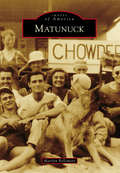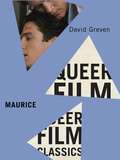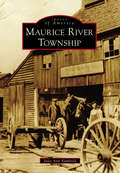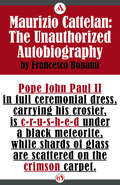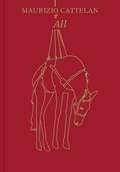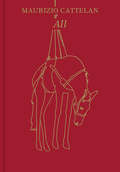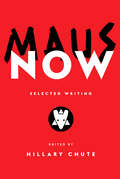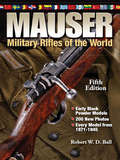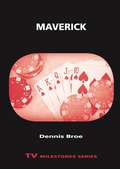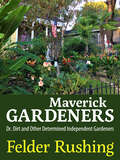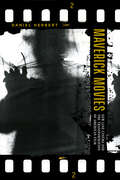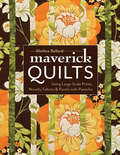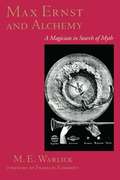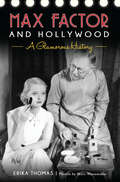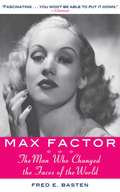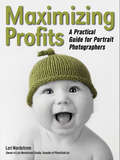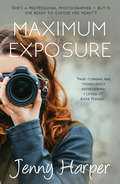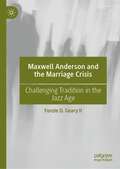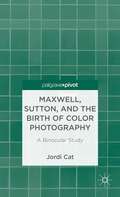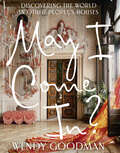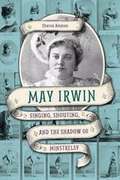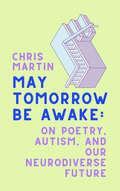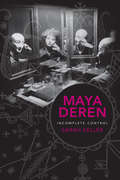- Table View
- List View
Matunuck
by Marilyn BellemoreThe village of Matunuck lies on the south coast of Rhode Island in the town of South Kingstown. It was first inhabited by Native Americans, followed by the early Pettaquamscutt settlers, but it was not until after the end of the Civil War that it became a destination for leisure and fun. This took the form of tent colonies on the beach and local farmers that rented out rooms and cottages to summer guests. Today, surfing, fishing, and sunbathing are popular activities at the beloved beaches, yet there is more that draws the thousands of tourists who visit each year. Theatre By The Sea has hosted world-renowned actors like Marlon Brando and Mae West, and beachfront establishments have long attracted a variety of musical acts. The village is also home to a national wildlife refuge, Trustom Pond, that is a safe haven to an array of species and is still preserved today.
Maturing Megacities: The Pearl River Delta in Progressive Transformation
by Sonia Schoon Uwe AltrockThis edited volume covers the multiple changes concerning urban governance in the course of the progressive transformation of the Pearl River Delta mega-urban region in China. Looking at the megacities Guangzhou and Shenzhen, it analyzes the maturing of socio-economic, political and spatial structures after the first waves of economic globalization, political transformation, and their rapid expansion and urbanization. The initial claim and starting point of the book is the existence of a profound multidimensional shift in the coastal mega-urban region with a major tendency towards urban upgrading, economic restructuring and a clearly observable consolidation of political institutions. For the first time since the beginning of the reform and opening up after 1978, this has led to a stronger bias toward urban regeneration, an adaptive re-use of the building stock and an establishment of post-industrial knowledge-based creative industries. The book investigates these changes as a set of mutually dependent developments that have to be understood and analyzed in connection with one another. Thus, the backgrounds and underlying forces that shape physical restructuring in the developed urban cores of the mega-urban region and the ways in which the relevant actors and institutions are trying to both cope with and to influence each other are introduced here.
Maud Stevens Wagner: "The Mona Lisa of American Tattoo"
by Alan GovenarMaud Stevens Wagner, the "Mona Lisa of American tattoo," was an ardent individualist who left home at a young age to pursue a career as a carnival performer, a contortionist, a tattoo model, and an aerialist. She was a thoroughly modern woman who asserted her independence and her own identity. Maud and her husband, Gus (known as the &“most artistically marked-up man in America"), traveled the country as the Wagner&’s Traveling Museum, exhibiting themselves and making tattoos around the US. This book is the second in the series Last of the Hand Tattoo Artists, detailing the lives of Gus, Maud, and their daughter, Lotteva. Author Alan Govenar brings you Maud&’s story with • Lotteva Wagner's oral history, • clippings and photographs from Gus Wagner&’s scrapbooks, • the Wagners' tattoo flash, and • newspaper articles and obituaries. As the author said, &“In one sense, Gus and Maud challenged all expectations, but in another, they embodied and celebrated the can-do spirit intrinsic to American life.&”
Maurice (Queer Film Classics #8)
by David GrevenMaurice, James Ivory’s 1987 adaptation of the E.M. Forster novel, follows an Edwardian man’s journey from the awakening of his desire for and love of men to self-acceptance. One of the most politically resistant films of the 1980s, Maurice dared to depict a young man’s coming-out story and a happy ending for its lovers, Maurice and Alec.James Ivory and producer Ismail Merchant, a couple whose cinema is synonymous with period film adaptation, released Maurice during the first AIDS decade, a time of flagrant transatlantic homophobia. Criticism following its release described Ivory as a superficial and staid director, while the film was received as a regression to the uncinematic and overly faithful style that characterized the early adaptations by Merchant Ivory Productions. Offering a close reading of Forster’s novel and an analysis of Ivory’s distinctive visual style, Richard Robbins’s indelible score, and the performances of James Wilby, Hugh Grant, and Rupert Graves, David Greven argues that the film is a model of sympathetic adaptation. This study champions the film as the finest of the Merchant Ivory works, making a case for Ivory’s underappreciated talents as a director of great subtlety and intelligence, and for the film as one worth recuperating from its detractors.Understanding Maurice as a fully realized work of art and adaptation, this volume offers insight into how a stunning novel of gay love became a classic of queer film.
Maurice River Township (Images of America)
by Julie Ann RumboldThe Maurice River Township area was first settled by the Lenni-Lenape along the Maurice River prior to the arrival of European explorers in the 1600s. The Maurice River became important for many industries, including oystering, commercial fishing, and crabbing. Dorchester and Leesburg, especially the Delaware Bay Shipbuilding Company, were well known for shipbuilding, and the area was very active during World War II. The township has been long recognized for agriculture due to its wonderful sandy ground. The soil has played an important role in the glass industry since the late 1800s, with the silica/sand utilized in a thriving glass-manufacturing business, initially in Port Elizabeth. The railroads were first built to ship oysters to large cities in the late 1800s to mid-1900s but were also employed to transport sand for the glass business and wood for the lumber industry. Many of the enterprises from earlier days have vanished in time, and along with them, some villages have entirely disappeared.
Maurizio Cattelan
by Francesco BonamiMaurizio Cattelan is undoubtedly the best known and most controversial contemporary Italian artist. His works include Hanged Children, the sculpture of John Paul II being struck by a meteorite--which was removed from a square in Milan due to public outcry--and, most recently, Finger, which was displayed in front of the Italian Stock Exchange headquarters. All of his works have aroused heated debate in the art world and the general public. Some believe Cattelan is one of the brightest geniuses of contemporary art, while others consider him only a vulgar--yet clever--provocateur. But who exactly is Maurizio Cattelan? Why does everything he creates cause a scandal?Francesco Bonami, who is the curator of numerous exhibitions and has collaborated with Cattelan on many projects, tells the true story, from the beginning of Cattelan's career to his current resounding success. In this officially unofficial biography, Maurizio Cattelan plays along and tells his story through Bonami, offering, as one of his most provocative works yet, his point of view on art and society--one that, as always, will have people talking.
Maurizio Cattelan: All
by Maurizio Cattelan Nancy SpectorHailed simultaneously as a provocateur, prankster and tragic poet of our times, Italian artist Maurizio Cattelan has created some of the most unforgettable images in recent contemporary art--most notoriously with "The Ninth Hour," his 1999 sculpture of Pope John Paul II struck by a meteorite. Cattelan's subjects range widely, being derived from popular culture, history and organized religion; while bold and irreverent, the work is also deadly serious in its scathing cultural critique. Maurizio Cattelan: All accompanies the Guggenheim Museum's retrospective survey of the artist. For the exhibition, the museum has devised a site-specific installation intended to sidestep the totalizing effect of a retrospective, and for this catalogue the museum has produced an equally unique response to this dilemma and to the conventions of the catalogue format. All is a faux-leather-bound hardcover with gold stamping and thin paper that is designed to resemble an old textbook or bible. The volume catalogues almost every work of Cattelan's from the late '80s to the present within a double-column page format, reproducing them in full color with accompanying entries. One of the wittiest and most beautiful art books of recent years, All includes a detailed critical overview by Nancy Spector, documenting not only Cattelan's artistic output but also his ongoing activities as a curator, editor and publisher, plus a comprehensive exhibition history and bibliography. Needless to say, All is indeed the definitive Cattelan bible.Maurizio Cattelan (born 1960) began his career as a furniture designer, transitioning to art through his realistic sculptures. He has had solo exhibitions at some of the most distinguished museums in the world, such as The Museum of Modern Art, New York and the Museum of Contemporary Art, Los Angeles. He has also founded and edited magazines such as Charley, Permanent Food and Toilet Paper. This is the ebook edition of Maurizio Cattelan: All, originally published in print in November, 2011.
Maurizio Cattelan: All
by Maurizio Cattelan Nancy SpectorHailed simultaneously as a provocateur, prankster and tragic poet of our times, Italian artist Maurizio Cattelan has created some of the most unforgettable images in recent contemporary art--most notoriously with "The Ninth Hour," his 1999 sculpture of Pope John Paul II struck by a meteorite. Cattelan's subjects range widely, being derived from popular culture, history and organized religion; while bold and irreverent, the work is also deadly serious in its scathing cultural critique. Maurizio Cattelan: All accompanies the Guggenheim Museum's retrospective survey of the artist. For the exhibition, the museum has devised a site-specific installation intended to sidestep the totalizing effect of a retrospective, and for this catalogue the museum has produced an equally unique response to this dilemma and to the conventions of the catalogue format. All is a faux-leather-bound hardcover with gold stamping and thin paper that is designed to resemble an old textbook or bible. The volume catalogues almost every work of Cattelan's from the late '80s to the present within a double-column page format, reproducing them in full color with accompanying entries. One of the wittiest and most beautiful art books of recent years, All includes a detailed critical overview by Nancy Spector, documenting not only Cattelan's artistic output but also his ongoing activities as a curator, editor and publisher, plus a comprehensive exhibition history and bibliography. Needless to say, All is indeed the definitive Cattelan bible.Maurizio Cattelan (born 1960) began his career as a furniture designer, transitioning to art through his realistic sculptures. He has had solo exhibitions at some of the most distinguished museums in the world, such as The Museum of Modern Art, New York and the Museum of Contemporary Art, Los Angeles. He has also founded and edited magazines such as Charley, Permanent Food and Toilet Paper. This is the ebook edition of Maurizio Cattelan: All, originally published in print in November, 2011.
Maus Now: Selected Writing
by Edited by Hillary ChuteRichly illustrated with images from Art Spiegelman&’s Maus (&“the most affecting and successful narrative ever done about the Holocaust&” —The Wall Street Journal), Maus Now includes work from twenty-one leading critics, authors, and academics—including Philip Pullman, Robert Storr, Ruth Franklin, and Adam Gopnik—on the radical achievement and innovation of Maus, more than forty years since the original publication of &“the first masterpiece in comic book history&” (The New Yorker).Pulitzer Prize-winning cartoonist Art Spiegelman is one of our most influential contemporary artists; it&’s hard to overstate his effect on postwar American culture. Maus shaped the fields of literature, history, and art, and has enlivened our collective sense of possibilities for expression. A timeless work in more ways than one, Maus has also often been at the center of debates, as its recent ban by the McMinn County, Tennessee, school board from the district&’s English language-arts curriculum demonstrates.Maus Now: Selected Writing collects responses to Spiegelman&’s monumental work that confirm its unique and terrain-shifting status. The writers approach Maus from a wide range of viewpoints and traditions, inspired by the material&’s complexity across four decades, from 1985 to 2018. The book is organized into three loosely chronological sections— &“Contexts,&” &“Problems of Representation,&” and &“Legacy&”—and offers for the first time translations of important French, Hebrew, and German essays on Maus.Maus is revelatory and generative in profound and long-lasting ways. With this collection, American literary scholar Hillary Chute, an expert on comics and graphic narratives, assembles the world&’s best writing on this classic work of graphic testimony.
Mauser Military Rifles of the World
by Robert W. BallMore Models - More Photos - More HistoryRobert Ball, the world's foremost authority on Mauser military rifles, continues to scour the continents in search of more details and models of this ubiquitous rifle. His years of research and expertise culminate in this definitive, full-color Mauser reference.In this new edition, you'll find:Previously unknown variationsRare coverage of experimental weapons and prototypesMeticulously cataloged descriptions, historical backgrounds, model specifics and markings, and detailed photographsOne of a kind, this edition is the most exhaustive reference ever for Mauser military rifles!
Maverick (TV Milestones Series)
by Dennis BroeAiring on ABC from 1957 to 1962, Maverick appeared at a key moment in television Western history and provided a distinct alternative to the genre's usual moralistic lawmen in its hero, Bret Maverick. A non-violent gambler and part-time con man, Maverick's principles revolved around pleasure and not power, and he added humor, satire, and irony to the usually grim-faced Western. In this study of Maverick, author Dennis Broe details how the popular series mocked, altered, and undermined the characteristics of other popular Westerns, like Gunsmoke and Bonanza. Broe highlights the contributions made by its creators, its producer, Roy Huggins, and its lead actor, James Garner, to a format that was described as "the American fairy tale." Broe describes how Garner and Huggins struck blows against a feudal studio system that was on its last legs in cinema but was being applied even more rigidly in television. He considers Maverick as a place where multiple counter-cultural discourses converged--including Baudelaire's Flaneur, Guy DeBord's Situationists, and Jack Kerouc's Beats--in a form that was acceptable to American households. Finally, Broe shows how the series' validation of Maverick's outside-the-law status punctured the Cold War rhetoric promoted by the "adult" Western. Broe also highlights the series' female con women or flaneuses, who were every bit the equal of their male counterparts and added additional layers to the traditional schoolteacher/showgirl Western dichotomy. Broe demonstrates the progressive nature of Maverick as it worked to counter the traditional studio mode of production, served as a locus of counter-cultural trends, and would ultimately become the lone outpost of anti-Cold War and anti-establishment sentiments within the Western genre. Maverick fans and scholars of American television history will enjoy this close look at the classic series.
Maverick Gardeners: Dr. Dirt and Other Determined Independent Gardeners
by Felder Rushing“Be forewarned that this book honors people like the woman in my hometown who paints the numbers of her favorite NASCAR drivers on her elephant ears, and a Tokyo gardener with over a hundred bonsai plants.” So says renowned garden journalist Felder Rushing in his new book Maverick Gardeners: Dr. Dirt and Other Determined Independent Gardeners. In this book, Felder delves deeply into the psychology of what motivates and sustains the Keepers of the Garden Flame. For thousands of years, a loosely connected web of unique, nontraditional gardeners has bonded people across race, culture, language, and other social conventions through sharing unique plants and stories. Found in nearly every neighborhood worldwide, these “determined independent gardeners” (DIGrs) are typically nonjoiners who garden simply and exuberantly, eschewing customary horticultural standards in their amateur pursuits of personal bliss. Included in Maverick Gardeners are classic “passalong plant” lists, a dollop of how-to, numerous color photographs, and thought-provoking essays on quintessential tools, sharing with others, getting away with wildflowers in suburbia, and organizing a plant swap. The centerpiece of this unique gardening journey is the no-holds-barred story of a ten-year cross-cultural collaboration between the horticulturist author and a flamboyant rebellious gardener who called himself Dirt. Through swapping plants and garden lore—and rubbing shoulders with fellow DIGrs—they unraveled their shared humanity. From the practical to the inspiring, Maverick Gardeners is the perfect book for those nonconformist souls who see no sense in trying to fit in and follow the footpaths of others.
Maverick Movies: New Line Cinema and the Transformation of American Film
by Daniel HerbertA free ebook version of this title is available through Luminos, University of California Press’s Open Access publishing program. Visit www.luminosoa.org to learn more.Maverick Movies tells the improbable story of New Line Cinema, a company that cut a remarkable path through the American film industry and movie culture. Founded in 1967 as an art film distributor, New Line made a small fortune running John Waters's Pink Flamingos at midnight screenings in the 1970s and found reliable returns with the Nightmare on Elm Street franchise in the 1980s. By 2001, the company competed with the major Hollywood studios and reached global box office success with the Lord of the Rings franchise. Blurring boundaries between high and low culture, between independent film and Hollywood, and between the margins and the mainstream, New Line Cinema epitomizes Hollywood's shift in focus from the mass audience fostered by the classic studios to the multitude of niche audiences sought today.
Maverick Quilts: Using Large-Scale Prints, Novelty Fabrics & Panels with Panache
by Alethea BallardTurn bold and unusual fabrics into stunningly beautiful quilts with this guide to creative yet surprisingly simple patterns.Fabrics that feature unique, colorful, or graphic designs can be as irresistible as they are challenging. How do you cut and arrange such beautiful fabric to use in a quilt? Art quilter Aletha Ballard provides the answer in Maverick Quilts. Alethea combines straightforward instruction on the basics of quilting with ten versatile and creative projects that are perfect for showing off bold designs and large-scale prints. Easy to follow and beautifully illustrated, Maverick Quilts show you just how easy it is to sew wild, joyful, colorful quilts with the fabrics you love.
Max Ernst and Alchemy: A Magician in Search of Myth
by M. E. WarlickSurrealist artist Max Ernst defined collage as the "alchemy of the visual image." Students of his work have often dismissed this comment as simply a metaphor for the transformative power of using found images in a new context. Taking a wholly different perspective on Ernst and alchemy, however, M. E. Warlick persuasively demonstrates that the artist had a profound and abiding interest in alchemical philosophy and often used alchemical symbolism in works created throughout his career.
Max Factor and Hollywood: A Glamorous History
by Erika ThomasThe story of the makeup artist who changed the film industry—and the world of modern cosmetics. Includes photos. When Polish wigmaker and cosmetician Max Factor arrived in Los Angeles at the dawn of the motion picture industry, &“make-up&” had been associated only with stage performers and ladies of the oldest profession. Appalled by the garish paints worn by actors, Factor introduced the first &“flexible&” greasepaint for film in 1914. With a few careful brush strokes, a lot of innovation, and the kind of luck that can happen only in Hollywood, Max Factor changed the meaning of glamour. His innovations can be experienced in every tube of lipstick, palette of eye shadow, and bottle of nail lacquer used today. Join author Erika Thomas as she reveals the makeup guru's expert beauty tips and the story of how he created the most iconic golden-era looks that are as relevant today as they were nearly a century ago.
Max Factor: The Man Who Changed the Faces of the World
by Fred E. BastenNice women never wore makeup. Even the word was taboo in polite society--until Max Factor entered the scene. Born in Poland in 1877, Factor worked as a beautician for the Russian royal family, the Romanovs. In 1904, he fled to America, where he opened a cosmetics store in Los Angeles. Creating makeup originally for silent films, then the talkies, and, ultimately, color motion pictures, Factor designed looks for Katharine Hepburn, Rita Hayworth, Bette Davis, and countless other beauties of the day. Soon women everywhere wanted to look like their favorite glamorous stars, and Factor was there to help, bringing his innovative cosmetics to the general public. He revolutionized the world of beauty by producing many firsts: false eyelashes, lip gloss, foundation, eye shadow, the eyebrow pencil, concealer, wand-applicator mascara, and water-resistant makeup. A true innovator, he also introduced the concept of color harmony and the celebrity-endorsed cosmetics advertising that forms the glamorous backbone of the modern industry. Max Factor was the father of modern makeup. This is his extraordinary story.
Maximizing Profits
by Lori NordstromIf you’ve got great camera skills and want to take the plunge and make your passion a career, you’ll need to build a solid business foundation from which your passion and creativity can take flight. If you’re like most artists, the business side of things seems a bit dry-and it may be something you dread. Fortunately, Lori Nordstrom takes the sting out of your studies and gives you all of the skills you need to plan your business, attract the attention of the clientele you want to serve, recruit a staff that supports your creative and financial objectives, create a top-notch customer-service experience, and show and sell your unique images to happy clients, time after time. Lori Nordstrom is an award-winning photographer and an active lecturer and blogger who inspires other photographers to make smart business decisions that positively impact the children-and-family portrait industry as a whole. In this book, she’s compiled her hard-won tips, sharing clear, simple ideas for developing your personal style; identifying your ideal client base, creating a referral system, constructing displays, getting media coverage, and hosting events. She’ll also help you understand how to hire a staff, create a budget, schedule your time, manage your workflow, and establish a sense of value and a cost structure that allows for a nice profit. Because all of your pre-session efforts should lead to a successful photographic experience for your clients, special attention is given to cultivating a standout studio experience that allows clients to feel relaxed, happy, and yes, pampered. Nordstrom also helps readers work through some issues that are notoriously challenging for photographers-breaking free of pricing set points, selling their products, and overcoming client objections to close the sale. This book offers a fresh, exciting, and friendly approach to building a sustainable business that affords photographers the opportunity to confidently create-and make a great living.
Maximum Exposure (The\heartlands Ser.)
by Jenny HarperShe’s a professional photographer – but is she ready to expose her heart?Adorable but scatterbrained newspaper photographer Daisy Irvine becomes the key to the survival of The Hailesbank Herald when her boss drops dead right in front of her. And while big egos and petty jealousies hinder the struggle to save the paper, Daisy starts another campaign – to win back her ex, Jack Hedderwick.Ben Gillies, returning after a long absence, sees childhood friend Daisy in a whole new light. He’d like to win her love, but discovers that she’s a whole lot better at taking photographs than making decisions, particularly when she’s blinded by the past.When tragedy strikes Daisy’s family, loyalty drives her home. But it’s time to grow up and Daisy must choose between independence and love.
Maxwell Anderson and the Marriage Crisis: Challenging Tradition in the Jazz Age
by Fonzie D. Geary IIThis book focuses on the re-evaluation of four Maxwell Anderson plays within the context of the emergence of the New Woman and the perception of a marriage crisis in the United States during the 1920s. The four plays under consideration are White Desert (1923), Sea-Wife (1924), Saturday’s Children (1927), and Gypsy (1929). These plays are largely forgotten and, even when the titles appear in Anderson scholarship, coverage has tended to be cursory and dismissive. This work represents a fresh approach and re-assessment of an American playwright who bore a significant impact on the drama of his time, serving not only to place Anderson’s work more effectively within the context of American theatre during the 1920s, but also to bridge the gap between his work and the marriage-related plays of the late twentieth and early twenty-first centuries.
Maxwell, Sutton and the Birth of Color Photography: A Binocular Study
by Jordi CatThis focused and incisive study reassesses the historic collaboration between James Clerk Maxwell and Thomas Sutton. It reveals that Maxwell and Sutton were closer to true partners than has commonly been assumed, and shows how their experiments illuminate the role of technology, representation, and participation in Maxwell's natural philosophy.
May I Come In?: Discovering the World in Other People's Houses
by Wendy GoodmanNew York magazine&’s interiors editor shares some of her most memorable house profiles in this stunning and inspiring visual tour. For May I Come In?, design editor extraordinaire Wendy Goodman visits seventy homes that express their owners&’ spirit and passions. In this pantheon, imagination and originality hold sway: Artists and eccentrics are the equals of aristocrats and the mandarins of design. Alba Clemente&’s closet is a Renaissance theater; Amy Sedaris built a playroom (but not for children); Andrew Solomon houses his guests in an igloo; Richard Avedon&’s private walls were bulletin boards; Kathy Ruttenberg&’s house is an animal kingdom; Jay Maisel called a former bank with seventy-two rooms home. Every room has a story to tell and a purpose for being. A self-described design hunter, Goodman spent thirty years seeking extraordinary living spaces. In her long career, she has found three things to be true. The first is that curiosity and never giving up will get you everywhere. The second is what Diana Vreeland stated best when she wrote, &“Few things are more fascinating than the opportunity to see how other people live during private hours.&” The third is that houses never lie. These principles underscore her search for individuality, human interest, and authenticity in design.May I Come In? is profusely illustrated with superb images by leading interior photographers, as well as Goodman&’s own snapshots and memorabilia related to her quests. It is an irresistible visual record of the art of living by one of its most astute observers.&“Page after page reveals interiors that practically vibrate with charisma, while others wax a poetic minimalism that, despite a lack of things, overwhelm with grace.&” —Vogue &“When it comes to the New York design scene, Wendy Goodman is positively an institution.&” —Town & Country
May Irwin: Singing, Shouting, and the Shadow of Minstrelsy
by Sharon AmmenMay Irwin reigned as America's queen of comedy and song from the 1880s through the 1920s. A genuine pop culture phenomenon, Irwin conquered the legitimate stage, composed song lyrics, and parlayed her celebrity into success as a cookbook author, suffragette, and real estate mogul. Sharon Ammen's in-depth study traces Irwin's hurly-burly life. Irwin gained fame when, layering aspects of minstrelsy over ragtime, she popularized a racist "Negro song" genre. Ammen examines this forgotten music, the society it both reflected and entertained, and the ways white and black audiences received Irwin's performances. She also delves into Irwin's hands-on management of her image and career, revealing how Irwin carefully built a public persona as a nurturing housewife whose maternal skills and performing acumen reinforced one another. Irwin's act, soaked in racist song and humor, built a fortune she never relinquished. Yet her career's legacy led to a posthumous obscurity as the nation that once adored her evolved and changed.
May Tomorrow Be Awake: On Poetry, Autism, and Our Neurodiverse Future
by Chris MartinAn author and educator’s pioneering approach to helping autistic students find their voices through poetry—a powerful and uplifting story that shows us how to better communicate with people on the spectrum and explores how we use language to express our seemingly limitless interior lives.Adults often find it difficult to communicate with autistic students and try to “fix” them. But what if we found a way to help these kids use their natural gifts to convey their thoughts and feelings? What if the traditional structure of language prevents them from communicating the full depth of their experiences? What if the most effective and most immediate way for people on the spectrum to express themselves is through verse, which mirrors their sensory-rich experiences and patterned thoughts?May Tomorrow Be Awake explores these questions and opens our eyes to a world of possibility. It is the inspiring story of one educator’s journey to understand and communicate with his students—and the profound lessons he learned. Chris Martin, an award-winning poet and celebrated educator, works with non-verbal children and adults on the spectrum, teaching them to write poetry. The results have been nothing short of staggering for both these students and their teacher. Through his student’s breathtaking poems, Martin discovered what it means to be fully human.Martin introduces the techniques he uses in the classroom and celebrates an inspiring group of young autistic thinkers—Mark, Christophe, Zach, and Wallace—and their electric verse, which is as artistically dazzling as it is stereotype-shattering. In telling each of their stories, Martin illuminates the diverse range of autism and illustrates how each so-called “deficit” can be transformed into an asset when writing poems. Meeting these remarkable students offers new insight into disability advocacy and reaffirms the depth of our shared humanity. Martin is a teacher and a lifelong learner, May Tomorrow Be Awake is written from a desire to teach and to learn—about the mind, about language, about human potential—and the lessons we have to share with one other.
Maya Deren
by Sarah KellerAssesses both the filmmaker's completed work and her numerous unfinished projects, arguing Deren's overarching aesthetic is founded on principles of incompletion, contingency, and openness
